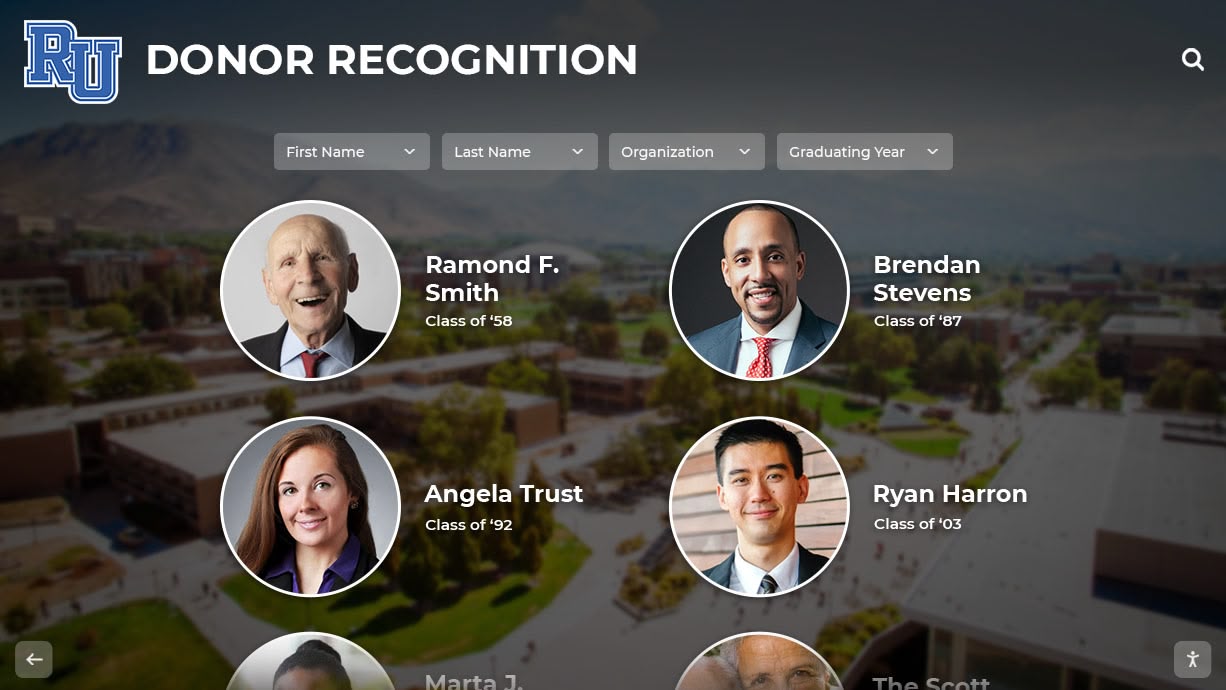Development officers and advancement teams face a persistent challenge: how do you meaningfully recognize thousands of donors while inspiring continued giving and attracting new supporters? Traditional donor walls with engraved plaques offer permanence but lack flexibility. Once installed, these static displays become frozen in time—unable to showcase new donors without costly modifications, incapable of telling impact stories, and limited to recognizing only those whose contributions fit within finite physical space.
Digital donor recognition displays solve these fundamental limitations by transforming how organizations honor philanthropic support. These interactive touchscreen systems provide unlimited recognition capacity, multimedia storytelling capabilities, and real-time updates that traditional plaques simply cannot match. Institutions implementing digital donor recognition report significant improvements in donor retention, enhanced fundraising outcomes, and deeper engagement with supporters who see their contributions celebrated through compelling, dynamic presentations.
Why Digital Donor Recognition Displays Matter
Modern donors expect meaningful recognition that demonstrates genuine appreciation and tangible impact. Digital displays meet these expectations by combining traditional acknowledgment with engaging technology that tells stories, showcases results, and creates emotional connections. Solutions like Rocket Alumni Solutions provide comprehensive platforms specifically designed for donor recognition, offering intuitive content management, professional presentation templates, and scalable systems that grow with your donor community.
The Evolution of Donor Recognition
Traditional donor recognition served institutions well for decades, but changing donor expectations and technological capabilities have transformed what effective stewardship looks like. Static plaques acknowledged contributions but provided little context about impact, offered no opportunity for storytelling, and created maintenance challenges as donor communities expanded.
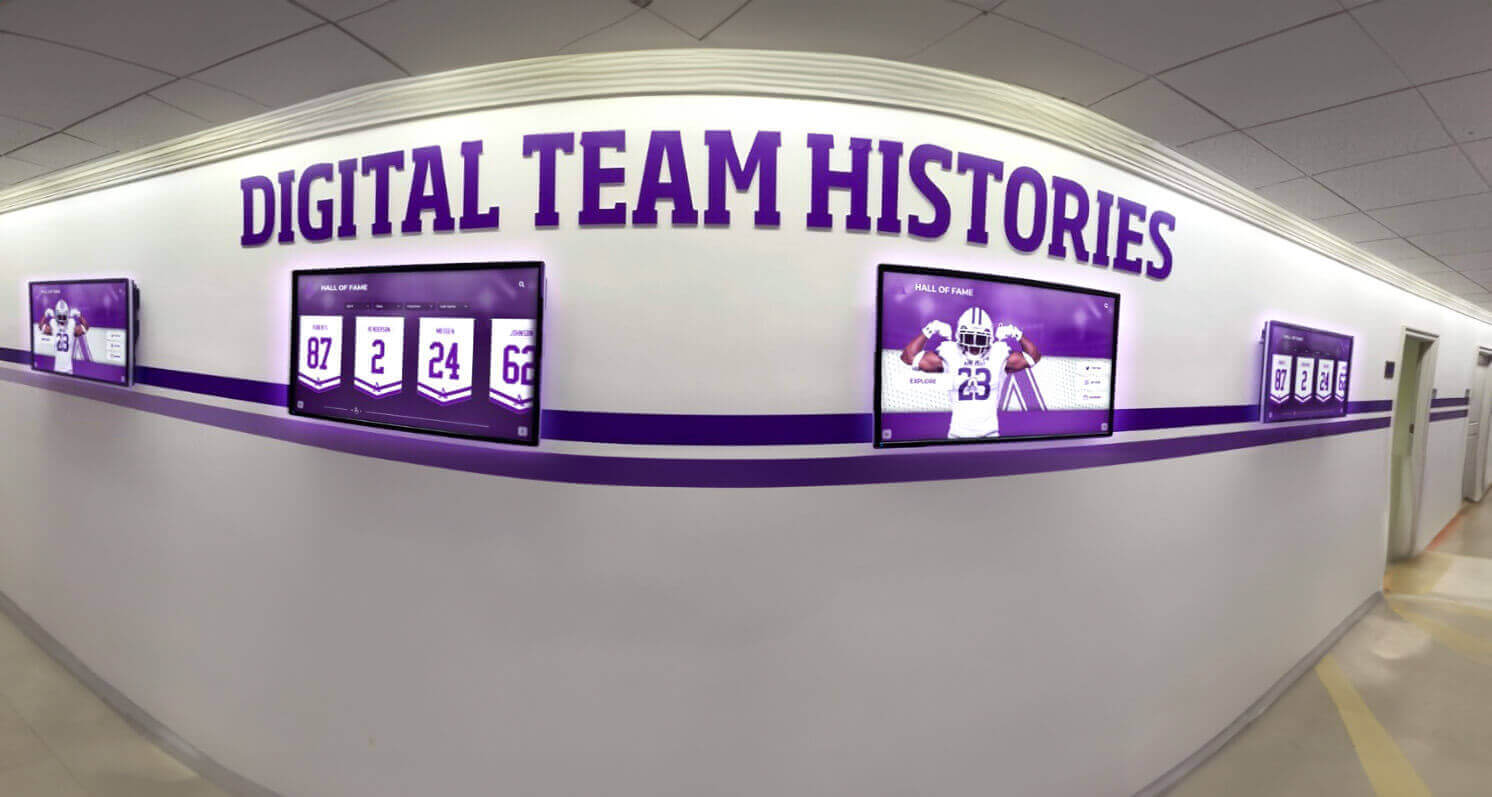
Limitations of Traditional Donor Walls
Physical donor recognition faces inherent constraints that limit effectiveness and sustainability. Space limitations force difficult decisions about which donors receive prime positioning and which get relegated to less visible locations or eliminated entirely as new supporters require recognition. Update costs become prohibitive—each new engraving, plaque installation, or wall expansion represents significant expense that diverts resources from mission-critical programs.
Traditional walls also provide no mechanism for demonstrating impact. Donors see their names listed but gain no insight into how their gifts created change, supported students, advanced research, or served communities. This disconnect between contribution and outcome limits the emotional resonance that drives continued engagement and future giving.
The Digital Transformation
Digital donor recognition displays address these limitations comprehensively while adding capabilities that elevate recognition to genuine stewardship. Unlimited capacity ensures every donor receives appropriate acknowledgment regardless of giving level or timing. Multimedia integration enables rich storytelling combining photos, videos, testimonials, and impact data. Real-time updates allow immediate recognition of new gifts, maintaining donor excitement when motivation peaks.
Interactive features transform passive viewing into active engagement. Donors search for their own names, explore giving histories, watch impact videos, and share recognition through social media—creating personal connections that traditional walls never achieve. Organizations implementing systems like Rocket Alumni Solutions discover that technology enhances rather than diminishes the personal nature of recognition when deployed thoughtfully.
Core Components of Digital Donor Recognition Systems
Effective digital donor displays combine specialized hardware, purpose-built software, and strategic content to create recognition experiences that genuinely honor supporters while advancing institutional goals.
Display Hardware Considerations
Touchscreen Technology: Commercial-grade capacitive touchscreens ranging from 43 to 75 inches provide intuitive interaction through familiar touch gestures. These displays mount to walls, integrate into architectural features, or deploy as freestanding kiosks depending on space design and traffic patterns. Screen size selection depends on viewing distance, content complexity, and whether displays serve individual exploration or group viewing.

Durability Requirements: Public-facing donor displays require commercial-grade components designed for continuous operation in high-traffic environments. Consumer-grade screens fail within months when deployed for 12-16 hours daily. Commercial displays designed for 50,000-70,000 hour lifespans provide reliable operation for 5-8 years before component replacement, ensuring recognition systems remain operational without frequent maintenance interruptions.
Installation Flexibility: Modern donor recognition systems offer multiple deployment options matching diverse facility requirements. Wall-mounted displays integrate cleanly into lobbies and reception areas. Freestanding kiosks provide flexibility in open spaces without permanent wall mounting. Custom enclosures incorporate institutional branding, architectural elements, and physical design that complements facility aesthetics while protecting technology components.
Software Platform Requirements
Purpose-built donor recognition software enables non-technical staff to manage complex recognition programs without requiring IT expertise for routine updates.
Intuitive Content Management: Cloud-based administrative interfaces allow authorized staff to add new donors, update giving levels, modify recognition categories, and publish changes instantly from any internet-connected device. Template-based systems ensure consistent professional presentation while providing customization flexibility for special recognition needs.
Database Integration: Advanced platforms connect with existing fundraising databases and CRM systems, automatically synchronizing donor information, gift histories, and recognition preferences. This integration eliminates manual data entry while ensuring accuracy across all institutional systems. Bi-directional synchronization keeps donor records current as information updates in either system.
Search and Navigation: Powerful search functionality enables visitors to locate specific donors instantly by name, giving level, recognition category, or affiliation. Intuitive navigation structures organize thousands of donors logically, allowing casual browsing by those exploring institutional support while enabling targeted searches by donors seeking their own recognition.

Analytics and Engagement Tracking: Comprehensive analytics reveal how donors and visitors interact with recognition displays. Track search queries, time spent viewing content, most-viewed profiles, and engagement patterns that inform content strategy and recognition program improvements. Understanding which features generate engagement helps optimize displays for maximum stewardship impact.
Strategic Content Development
Recognition content extends far beyond basic name listings to create meaningful connections between donors and mission impact.
Tiered Recognition Structures: Organize donors into clear giving levels that acknowledge contribution magnitude while maintaining dignity across all support levels. Create naming conventions that honor major donors while ensuring annual fund contributors receive genuine appreciation. Typical structures include Visionary Circle, Leadership Society, Benefactor, Patron, and Supporter levels with corresponding visual distinction and enhanced content for higher tiers.
Impact Storytelling: Connect individual contributions to tangible outcomes through compelling narratives. Feature scholarship recipients discussing how donor support changed their lives. Show research breakthroughs funded by philanthropic investment. Document facility improvements, program expansions, and community services made possible by donor generosity. This impact demonstration transforms recognition from simple acknowledgment to meaningful stewardship that reinforces giving decisions.
Donor Profiles and Testimonials: Allow willing donors to share their motivations for giving through personal profiles explaining why they support your mission. These testimonials inspire prospective donors while honoring existing supporters through authentic storytelling that transcends name listings. Video testimonials create particularly powerful emotional connections that written profiles alone cannot achieve.
Historical Context: Demonstrate philanthropic legacy by showcasing giving histories spanning decades. Timeline presentations show how donor support evolved alongside institutional growth. Highlight founding donors and legacy society members whose sustained commitment built foundations for current excellence. This historical perspective helps current donors see themselves as part of ongoing tradition rather than isolated transactions.
Strategic Benefits for Advancement Programs
Digital donor recognition delivers measurable advantages that strengthen fundraising programs and enhance overall institutional advancement.
Enhanced Donor Retention
Research consistently demonstrates that meaningful recognition significantly impacts donor retention. Organizations report 15-25% improvements in donor retention rates following digital recognition implementation. This improvement results from several factors working together to strengthen donor relationships.
Immediate recognition satisfies donors’ natural desire for acknowledgment when giving motivation peaks. Traditional plaques require months for fabrication and installation—by which time donor enthusiasm has waned. Digital systems enable same-day recognition that reinforces positive giving experiences while gratitude feels fresh and authentic.
Ongoing visibility ensures donors encounter their recognition regularly rather than experiencing one-time acknowledgment. Traditional plaques become invisible once installed—donors see their names during dedication ceremonies then rarely revisit displays. Digital systems update dynamically with new content, creating reasons for donors to return and re-engage with their recognition regularly.
Improved Major Gift Cultivation
Advancement officers leveraging digital recognition displays report accelerated major gift timelines and increased gift sizes. Interactive displays serve as cultivation tools during donor meetings and facility tours, providing compelling demonstrations of recognition benefits for prospective major donors.

Real-time demonstration of recognition options allows development staff to show prospects exactly how their gifts would be honored without relying on static mockups or verbal descriptions. Walk major donor prospects through actual display interfaces, show similar donor profiles, and illustrate naming opportunities through live demonstrations that create tangible visualization of recognition benefits.
Flexible recognition levels accommodate complex gift structures common in major philanthropy. Digital systems easily handle multi-year pledges, planned gifts, family foundation giving, and corporate matching scenarios that traditional plaques struggle to represent appropriately. Create recognition that acknowledges both current gifts and cumulative lifetime giving, helping donors understand their overall impact trajectory.
Cultivation of Next-Generation Donors
Younger donors particularly appreciate technology-enabled recognition that aligns with their digital communication preferences. Millennial and Gen Z donors expect social sharing capabilities, mobile accessibility, and interactive engagement—all native to digital recognition systems but impossible with traditional plaques.
Social media integration allows donors to share their recognition easily across personal networks, creating organic advocacy that attracts peer donations. When donors photograph their digital profiles and post to Instagram, LinkedIn, or Facebook, they introduce your mission to hundreds of potential new supporters who trust peer recommendations more than institutional marketing.
Mobile accessibility extends recognition beyond physical locations. Donors access recognition displays from anywhere via web portals and mobile apps, maintaining engagement between campus visits. This constant accessibility keeps institutions top-of-mind while enabling long-distance donors to experience recognition comparable to local supporters who visit physical displays regularly.
Operational Efficiency Gains
Digital recognition streamlines advancement operations by eliminating time-consuming manual processes associated with traditional donor walls. Staff avoid coordinating with engravers, tracking plaque installations, and managing physical wall expansions. Updates that previously required weeks occur in minutes through intuitive administrative interfaces.
Budget predictability improves dramatically. Traditional walls require significant variable expenses each time new donors need recognition—fabrication costs, installation fees, and potential wall expansion. Digital systems convert these unpredictable variable costs into manageable fixed expenses through annual software subscriptions that cover unlimited recognition additions.
Implementation Strategies for Success
Organizations successfully deploying digital donor recognition follow systematic approaches that ensure technical success, stakeholder buy-in, and optimal content development.
Planning and Stakeholder Engagement
Needs Assessment: Begin by evaluating current recognition limitations, donor feedback about existing systems, and advancement program goals. Document which donor segments require better recognition, identify content gaps in current stewardship, and establish success metrics for new systems. This foundation ensures implementation addresses genuine needs rather than pursuing technology for its own sake.
Leadership Alignment: Secure buy-in from board members, senior leadership, and key donors before proceeding. Demonstrate how digital recognition advances strategic advancement goals, supports capital campaigns, and enhances donor stewardship. Address concerns about tradition and permanence by showing how technology complements rather than replaces time-honored recognition values.
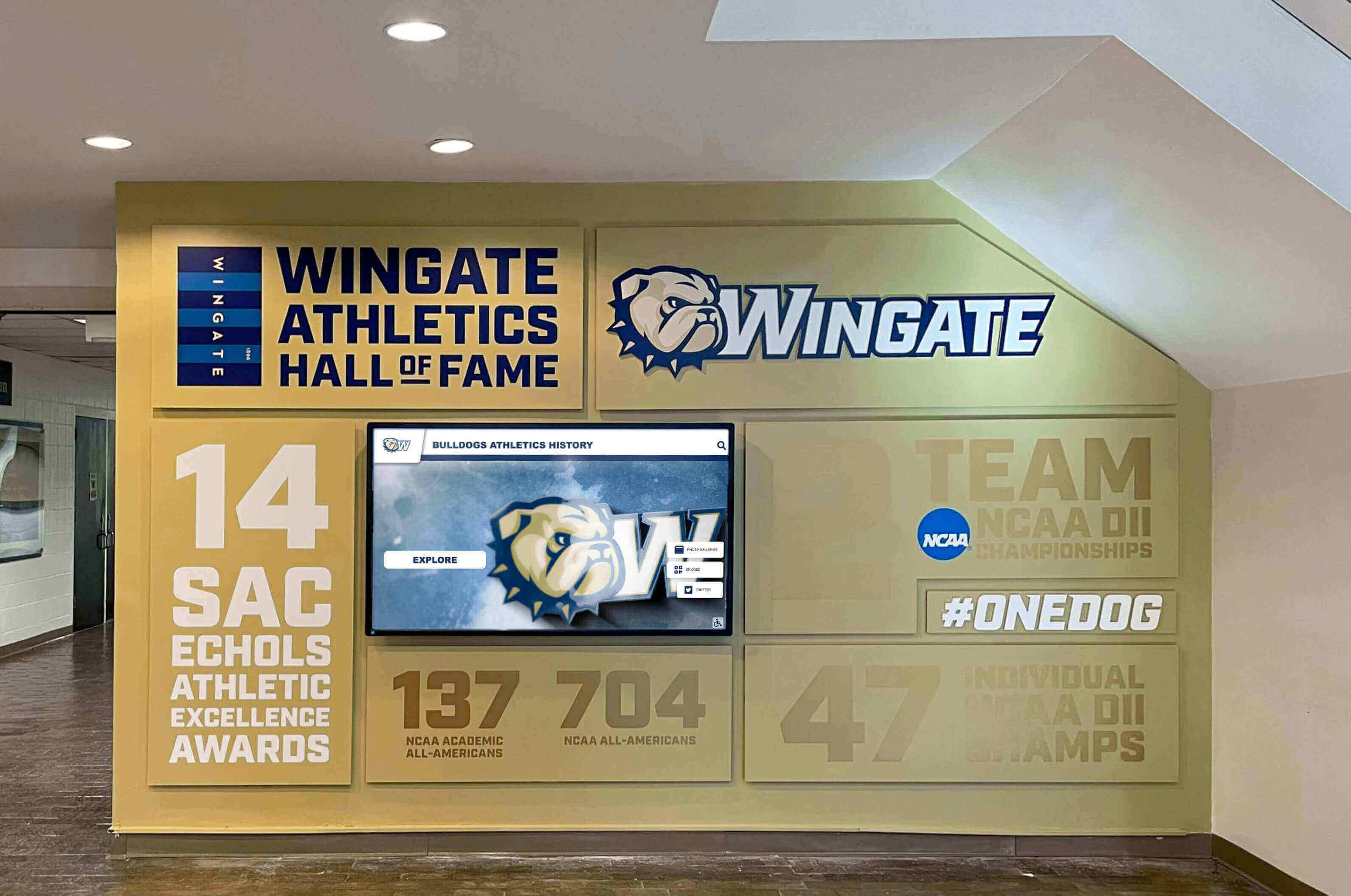
Budget Development: Establish realistic budgets covering initial implementation and ongoing operations. Typical investments include hardware and installation ($8,000-$25,000), software platform and customization ($5,000-$15,000), initial content development ($3,000-$10,000), and annual software and support ($2,000-$5,000). Many organizations fund implementations through donor sponsorships or allocate portions of campaign budgets, recognizing that recognition infrastructure represents legitimate campaign expenses.
Technology Selection
Platform Evaluation: Assess donor recognition platforms based on specific institutional requirements. Prioritize systems offering CRM integration capabilities, intuitive content management requiring no technical expertise, professional template libraries ensuring consistent presentation, comprehensive analytics tracking engagement, and established vendor track records serving similar organizations. Solutions like those detailed in guides to donor recognition ideas and tips demonstrate proven approaches that inform platform selection.
Vendor Partnership: Choose vendors offering comprehensive support beyond initial installation. Evaluate training programs ensuring staff competency, technical support responsiveness during business hours, content development assistance for initial launch, and strategic consulting helping optimize recognition programs over time. The vendor relationship should feel collaborative rather than transactional.
Hardware Specifications: Match display hardware to installation environments and user needs. Consider screen size appropriate for viewing distances and space scale, brightness levels sufficient for ambient lighting conditions, touch sensitivity accommodating diverse user abilities, anti-glare coatings improving readability, and mounting options compatible with facility infrastructure. Consult facilities teams early to address power, networking, and structural requirements.
Content Strategy and Development
Recognition Structure: Design giving level hierarchies that acknowledge contribution ranges appropriately. Create clear thresholds for recognition tiers that align with fundraising goals while ensuring accessibility across donor capacity ranges. Establish naming conventions that honor major donors distinctly while treating all supporters with dignity regardless of gift size.
Content Prioritization: Launch with highest-impact content that demonstrates system value immediately. Prioritize current campaign donors who expect prompt recognition, major gift prospects whose recognition serves cultivation purposes, legacy society members representing sustained commitment, and historical donors whose recognition establishes tradition. Systematically expand content after launch rather than delaying implementation while pursuing perfection.
Multimedia Development: Invest in professional content creation that reflects institutional quality standards. High-resolution photography, professionally edited video testimonials, and well-written impact narratives significantly enhance recognition effectiveness. Many organizations leverage existing marketing content, communications materials, and advancement assets rather than creating everything from scratch.

Ongoing Maintenance: Establish clear responsibility for regular content updates and system management. Whether advancement staff, communications professionals, or dedicated recognition coordinators manage systems, defined processes ensure consistent attention. Schedule regular content reviews, establish update protocols for new gifts, and create editorial calendars maintaining fresh featured content that encourages repeat engagement.
Creative Applications Beyond Basic Recognition
Organizations discovering digital recognition flexibility find innovative applications that extend beyond straightforward donor listing.
Campaign Thermometers and Progress Tracking
Real-time fundraising progress displays create transparency that inspires giving momentum. Digital systems showcase current campaign totals, goals, and milestones achieved through dynamic visualizations that update automatically as gifts arrive. This transparency builds confidence in campaign success while creating urgency among prospects considering contributions.
Interactive goal tracking allows visitors to explore how individual donations advance specific campaign priorities. Show scholarship fundraising progress separately from facility funding, enabling donors to understand exactly where their gifts fit within comprehensive campaigns. This granularity helps donors make strategic giving decisions aligned with personal interests.
Recognition Society Showcases
Create dedicated content areas highlighting giving societies that acknowledge sustained annual support, cumulative lifetime giving, or planned gift commitments. Society pages feature member directories, society benefits, event information, and stories from fellow members explaining their giving motivations. This prominent recognition reinforces membership value while encouraging non-members to join elite donor groups.
Legacy society recognition honors donors who include institutions in estate plans through prominent displays explaining planned giving options, featuring legacy society members, and telling stories about how bequests create enduring impact. This visibility normalizes planned giving conversations while honoring donors making extraordinary long-term commitments.
Impact Dashboard Integration
Connect donor recognition directly to institutional metrics demonstrating how philanthropic support drives measurable outcomes. Display dashboards showing students served, research grants funded, facilities upgraded, or community programs delivered—all made possible by donor generosity. This impact visualization reinforces that recognition celebrates more than financial transactions; it honors genuine mission advancement.
Allow donors to explore specific programs their gifts support through interactive content linking individual contributions to program outcomes. When donors see exactly how their scholarship gifts supported specific students or understand precisely which research their contributions funded, abstract philanthropy becomes concrete impact that justifies continued investment.
Virtual Recognition Extensions
Extend digital recognition beyond physical displays through web portals accessible from anywhere. Online donor directories allow supporters to explore recognition remotely, particularly valuable for geographically dispersed alumni and long-distance donors unable to visit campus regularly. Ensure mobile optimization so donors access recognition conveniently from smartphones during downtime.
Social sharing functionality enables donors to broadcast their recognition across personal networks, creating organic advocacy that introduces missions to new prospect audiences. When donors proudly share recognition screenshots with friends and family, they implicitly endorse institutions while demonstrating social proof that encourages peer giving.
Addressing Common Concerns
Organizations considering digital donor recognition frequently raise predictable questions about tradition, cost, and effectiveness.
“Won’t Digital Recognition Feel Less Permanent?”
This concern reflects genuine attachment to traditional recognition permanence. Address it by emphasizing that digital systems provide more enduring recognition than physical plaques. Engraved plaques deteriorate, become damaged, or require removal during renovations—digital content persists indefinitely while remaining accessible regardless of facility changes.
Digital recognition also provides permanence impossible with physical walls: comprehensive historical archives ensuring no donor gets forgotten, unlimited capacity preventing recognition removals to accommodate new donors, and consistent visibility rather than deterioration into background noise as plaques age and blend into surroundings.
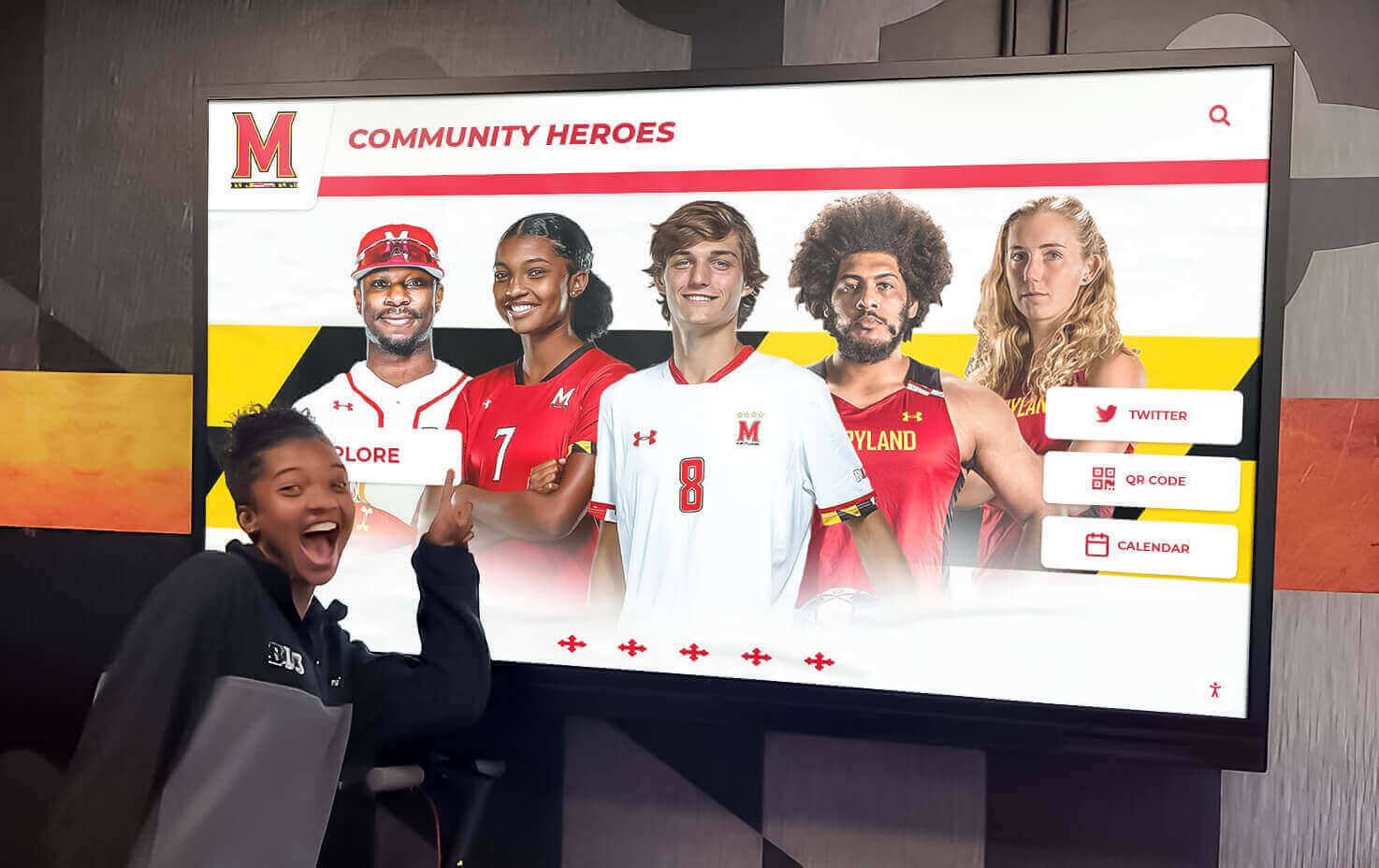
“How Do We Justify the Investment?”
Frame digital recognition as strategic advancement infrastructure rather than discretionary expense. Calculate total cost of ownership comparing digital systems against ongoing traditional recognition expenses over 10-year periods. Include new plaque fabrication costs, installation expenses, wall expansion requirements, and update labor in traditional approach calculations.
Demonstrate measurable returns through improved donor retention metrics, major gift cultivation efficiency, and reduced advancement operations time spent coordinating physical recognition. Most organizations discover positive ROI within 3-5 years while gaining capabilities that traditional recognition never provides regardless of investment. The comprehensive fundraising guide for digital recognition outlines strategies for securing implementation funding through donor sponsorships and campaign allocations.
“What About Donors Who Prefer Traditional Recognition?”
Implement hybrid approaches that honor tradition while embracing innovation. Maintain selective physical recognition for major campaign donors, legacy society inductees, or naming opportunities while providing comprehensive digital recognition for all supporters. This combination respects donor preferences while solving capacity and flexibility limitations.
Involve skeptical donors in design processes, seeking their input on recognition presentation, content structure, and traditional elements to incorporate digitally. When donors help shape systems, they develop ownership and appreciation for capabilities that traditional approaches cannot match. Many initial skeptics become strongest advocates after experiencing well-designed digital recognition firsthand.
“How Do We Keep Content Fresh and Engaging?”
Successful digital recognition requires ongoing attention rather than set-and-forget deployment. Establish content calendars featuring rotating donor spotlights, seasonal campaign highlights, and impact stories demonstrating how gifts create change. Schedule quarterly reviews identifying content needing updates, recognition requiring corrections, and new features to add based on user engagement analytics.
Engage volunteers, advancement committee members, or student interns to support content development, spreading workload while building broader ownership. Many organizations discover that content maintenance requires less ongoing effort than traditional recognition coordination—updates take minutes rather than weeks while delivering significantly enhanced stewardship value.
Integration with Comprehensive Advancement Programs
Digital donor recognition delivers maximum value when integrated strategically within holistic advancement operations rather than deployed as isolated technology.
Donor Journey Mapping
Position recognition experiences at strategic points throughout donor lifecycles. Prospective donors encounter recognition during facility tours, seeing exactly how contributions get honored. New donors receive immediate digital recognition confirming gifts while motivation remains high. Sustained donors regularly see recognition updates maintaining top-of-mind awareness. Lapsed donors discover renewed recognition when cultivation efforts resume.
Create recognition touchpoints across multiple channels beyond physical displays. Email signatures can link to online recognition portals. Event invitations can reference donor status and recognition benefits. Stewardship reports can include screenshots of digital profiles personalizing communications. This multi-channel recognition reinforces donor value across all institutional interactions.
Campaign Integration
Digital recognition systems serve active campaign needs through flexible recognition structures acknowledging current giving while projecting future goals. Create campaign-specific recognition categories highlighting priority initiatives, allowing donors to see exactly how their gifts advance specific campaign objectives rather than general operating support.
Use digital displays during campaign events as real-time progress trackers showing gifts made during events, creating excitement and momentum that encourages on-site commitments. This immediate recognition satisfies donors’ desires for acknowledgment while demonstrating campaign success to prospects evaluating whether to participate.
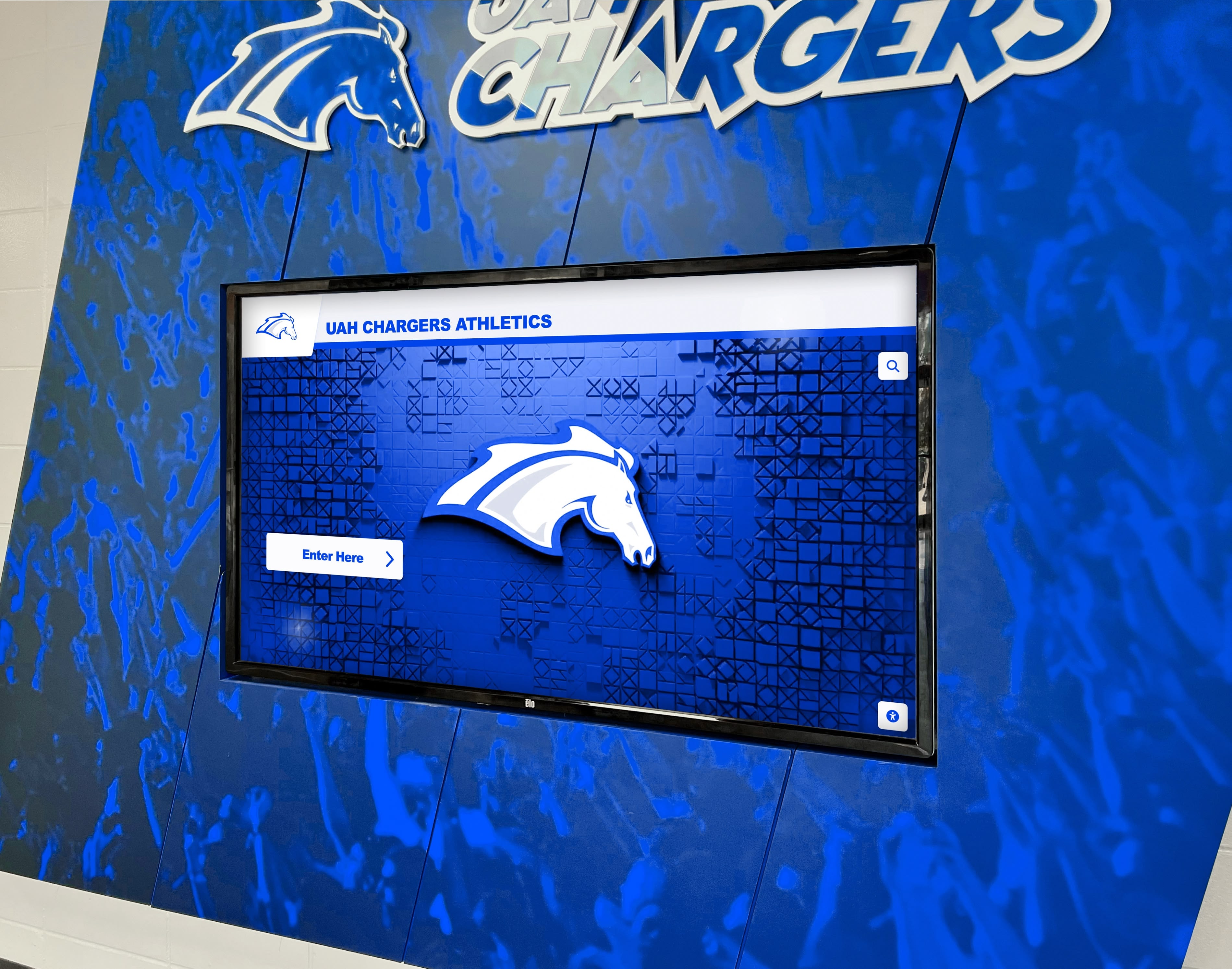
Volunteer and Board Recognition
Extend recognition beyond financial contributions to acknowledge time, talent, and treasure. Create volunteer recognition sections honoring board members, committee participants, event volunteers, and community advocates who advance missions through service. This comprehensive recognition demonstrates that institutions value diverse contribution forms while encouraging non-donor volunteers to consider financial support.
Board member recognition serves recruitment purposes by demonstrating how institutions honor leadership. Prospective board members considering service commitments appreciate seeing current board members recognized prominently through professional displays that reflect positively on organizational quality and donor stewardship sophistication.
Alumni Engagement Connections
When donor recognition systems integrate with alumni engagement displays, institutions create comprehensive recognition ecosystems celebrating all forms of community participation. Alumni see their achievements honored alongside their philanthropic support, creating holistic recognition that strengthens institutional connections through multiple identity dimensions simultaneously.
This integration also reveals cultivation opportunities by identifying accomplished alumni who haven’t yet become donors. When advancement staff see successful alumni featured in achievement recognition but absent from donor displays, it signals prospects worthy of cultivation outreach. Cross-referencing recognition systems creates strategic intelligence that informs sophisticated advancement strategies.
Technology Trends Shaping Future Recognition
Digital donor recognition continues evolving as new technologies emerge and donor expectations shift. Understanding these trends helps organizations future-proof recognition investments.
Artificial Intelligence and Personalization
AI-powered recognition systems will increasingly personalize content based on viewer identity, interests, and engagement history. When donors approach displays, systems might recognize them through mobile devices or RFID badges, immediately surfacing personalized content showing their giving impact, suggesting matching gift opportunities, or highlighting campaigns aligned with their interests.
Natural language interfaces will allow conversational interaction with recognition systems. Donors might ask “Show me impact from my 2023 scholarship gift” or “How many students has my giving supported over ten years?” and receive instant, personalized responses rather than navigating menus manually. This conversational interaction makes recognition more accessible while providing deeper engagement opportunities.
Augmented Reality Enhancements
AR technology will overlay digital recognition onto physical environments through smartphone apps, enabling hybrid experiences that combine traditional architectural elements with dynamic digital content. Donors point phones at physical donor walls to see animated content, video testimonials, and interactive information that static plaques cannot convey.
Virtual facility tours will incorporate donor recognition, allowing remote supporters to experience recognition displays without visiting campuses. As virtual and augmented reality become mainstream, institutions will need recognition systems that translate effectively to these immersive digital environments while maintaining emotional resonance and personal connection that make recognition meaningful.
Blockchain and Transparency
Blockchain technology will enable unprecedented transparency about how donor contributions get used. Digital recognition systems might connect individual donations directly to specific program outcomes through immutable records showing exactly which students received scholarships, which research got funded, or which facilities got built—all verifiable through decentralized ledgers that prove impact claims rather than simply asserting them.
This transparency will become particularly important for younger donors who demand accountability and evidence that contributions create intended impacts. Organizations embracing these technologies will differentiate themselves in increasingly competitive philanthropy markets where trust and transparency drive giving decisions.
Measuring Recognition Effectiveness
Strategic organizations track recognition impact through quantitative metrics and qualitative feedback that inform continuous improvement.
Engagement Analytics
Monitor how donors and visitors interact with recognition displays through comprehensive analytics revealing usage patterns, popular content, search behaviors, and engagement duration. Track unique users, session lengths, most-viewed profiles, search queries, and feature utilization to understand what resonates with audiences and what gets ignored.
Compare engagement metrics across donor segments, identifying whether major donors interact differently than annual fund supporters or whether alumni engage more deeply than community donors. These insights inform content strategies, feature priorities, and recognition structures that optimize stewardship impact across diverse audiences.

Donor Feedback
Systematically gather donor perceptions through surveys, focus groups, and informal conversations about recognition experiences. Ask donors whether recognition feels meaningful, whether they’ve shared recognition with others, and whether displays influenced their giving decisions. This qualitative feedback reveals emotional impacts that pure analytics cannot capture.
Pay particular attention to feedback from major donor prospects during cultivation. Development officers should debrief after donor meetings incorporating recognition displays, noting prospect reactions, questions asked, and whether displays enhanced or detracted from cultivation experiences. This frontline intelligence helps advancement teams optimize recognition as cultivation tools.
Fundraising Impact Metrics
Ultimately, recognition effectiveness manifests in advancement outcomes. Track donor retention rates comparing pre- and post-implementation periods, segmented by donor levels and constituencies. Monitor major gift pipeline velocity, measuring whether prospects move through qualification, cultivation, and solicitation stages faster after recognition system deployment.
Analyze giving upgrade rates among donors featured in recognition displays compared to those not yet recognized. If recognition drives increased giving—as research suggests it should—recognized donors should demonstrate higher upgrade rates, larger subsequent gifts, and greater likelihood of planned giving commitments compared to unrecognized peers.
Implementation Success Stories
Organizations across sectors have successfully deployed digital donor recognition, creating compelling stewardship experiences while achieving measurable advancement outcomes.
University Capital Campaign
A mid-size private university implementing comprehensive digital donor recognition during a $100 million campaign discovered that recognition displays accelerated major gift cultivation cycles by an average of 4-6 months. Development officers reported that showing prospects their proposed recognition during solicitation meetings significantly increased gift commitment rates and average gift sizes.
The system enabled immediate recognition of campaign gifts received during events, creating excitement that generated additional spontaneous commitments totaling more than $500,000 during the campaign’s final year. Post-campaign, the university maintained 82% donor retention compared to 67% following their previous campaign, attributing improvement partially to enhanced recognition and stewardship enabled by digital systems.
Community Foundation
A regional community foundation serving multiple counties deployed digital donor recognition across three offices, creating consistent recognition experiences while highlighting local impact stories specific to each location. The foundation reported 23% increase in individual giving within two years of implementation, with particularly strong growth among donors under 50 who appreciated social sharing capabilities and mobile accessibility.
The system’s flexibility enabled the foundation to recognize donors across multiple funds, campaigns, and timeframes simultaneously—complexity impossible with traditional recognition. Donors maintaining multiple endowments appreciated consolidated profiles showing their comprehensive philanthropic relationships rather than fragmented recognition across physical plaques throughout facilities.
Healthcare System
A regional healthcare system replacing aging donor plaques with digital recognition during facility renovations achieved both immediate cost savings and long-term stewardship improvements. Traditional recognition update would have cost $75,000 for new plaques and wall expansions. Digital implementation cost $55,000 while providing unlimited future capacity and enhanced storytelling capabilities traditional walls could never match.
The system prominently features patient testimonials thanking donors for life-saving equipment, expanded services, and improved facilities. These emotional impact stories resonate powerfully with donors who see concrete evidence that their contributions directly improved patient care. The healthcare system reports that donors increasingly reference these testimonials in subsequent giving conversations, indicating that impact storytelling significantly enhances stewardship effectiveness.
Moving Forward: Your Digital Recognition Journey
Digital donor recognition represents significant opportunity for organizations seeking to enhance stewardship, strengthen donor relationships, and build advancement programs positioned for sustained success. The transformation from static plaques to dynamic, engaging recognition systems reflects broader evolution in donor expectations, communication technology, and philanthropy best practices.
Organizations ready to explore digital recognition should begin by assessing current recognition limitations, gathering donor feedback about existing systems, and establishing clear goals for what improved recognition should achieve. Engage advancement teams, donor constituency groups, and institutional leadership in planning processes that build broad ownership while addressing legitimate concerns about tradition, investment, and implementation.
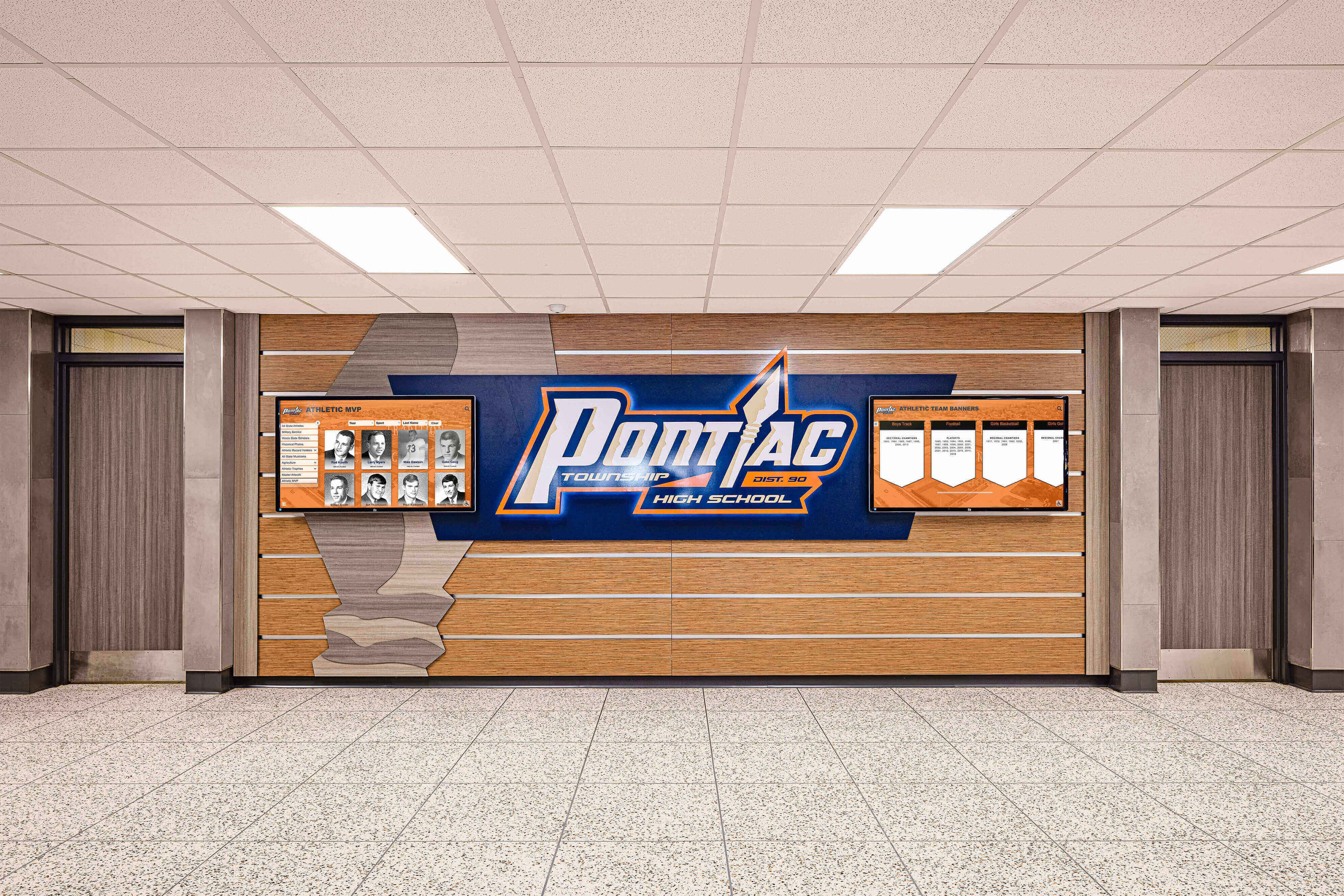
The journey from concept to operational system typically spans 6-9 months including planning, vendor selection, content development, installation, and launch. This timeline allows thoughtful implementation that addresses technical, content, and stakeholder requirements without rushing processes that benefit from deliberate attention.
Funding strategies vary by organization but commonly include donor sponsorships (recognition system itself becomes recognition opportunity), capital campaign allocations (recognition infrastructure represents legitimate campaign expense), operational budget investments (advancement infrastructure supporting long-term success), and planned giving society contributions (legacy society members funding recognition honoring their planned gifts). The comprehensive guide to donor recognition provides additional context for positioning recognition investments strategically within broader advancement priorities.
Most importantly, approach digital recognition as ongoing program rather than one-time project. Systems delivering maximum stewardship value receive consistent attention through regular content updates, feature enhancements, and strategic integration with evolving advancement initiatives. Organizations treating recognition as living program rather than static installation discover that technology becomes catalyst for stronger donor relationships, enhanced engagement, and sustained philanthropic growth.
Digital donor recognition displays transform how institutions honor the generosity that makes missions possible. By combining unlimited capacity, engaging storytelling, and real-time flexibility, these systems create recognition experiences that genuinely strengthen donor relationships while advancing strategic fundraising goals. Whether replacing aging traditional walls, enhancing existing recognition programs, or implementing first-time comprehensive donor recognition, digital displays provide foundation for donor stewardship excellence that serves institutions and supporters for decades to come.
Ready to explore digital donor recognition for your organization? Solutions like Rocket Alumni Solutions offer comprehensive platforms specifically designed for institutional recognition needs, combining intuitive management, engaging user experiences, and proven effectiveness serving hundreds of schools, nonprofits, and organizations nationwide.
